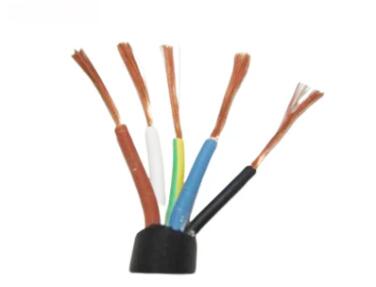The Anatomy of Connectivity: Understanding the Basic Components of an Electric Wire
2023-11-28
Introduction:
In the intricate tapestry of electrical systems, the electric wire stands as a fundamental conduit for the flow of energy. While its purpose might seem straightforward, a closer look reveals a nuanced structure comprised of essential components that ensure not only the efficient transmission of electricity but also the safety of the entire system. In this blog, we will dissect the basic components of an electric wire, uncovering the elements that make it an indispensable part of our connected world.
1. Conductor:
At the core of every electric wire lies the conductor, the pathway for electrons to flow. Typically made of highly conductive materials such as copper or aluminum, the conductor serves as the highway through which electrical current travels. The choice of conductor material plays a pivotal role in determining the wire's conductivity, resistance, and overall efficiency.
2. Insulation:
Surrounding the conductor is the insulation, a protective layer crucial for ensuring the safety and reliability of the wire. Insulation materials like PVC (polyvinyl chloride), rubber, or thermoplastics act as a barrier, preventing unintended contact with other conductive materials or surfaces. This insulation is paramount in preventing short circuits, electrical shocks, and maintaining the integrity of the electrical system.
3. Jacket/Sheath:
In certain instances, electric wires feature an additional layer known as the jacket or sheath. This outer covering provides further protection against environmental factors such as moisture, chemicals, and physical damage. The jacket enhances the wire's durability, making it suitable for a wide range of applications, including outdoor use.
Now, let's delve deeper into the functions and significance of each of these components:
The Conductor: The Heart of the Wire:
The conductor is the lifeblood of the electric wire. Its primary function is to offer a low-resistance pathway for the flow of electrical current. Copper, due to its excellent conductivity, is a popular choice for conductors in most applications. Aluminum, while less conductive than copper, is often used in situations where weight is a critical factor.
Insulation: Safeguarding Against Chaos:
Insulation is the guardian of safety in an electric wire. Its primary role is to prevent the flow of electricity to unintended paths, protecting users and preventing electrical mishaps. The thickness and quality of insulation are carefully chosen based on the wire's application, ensuring that it meets safety standards and regulations.
Jacket/Sheath: Armor for the Wire:
The jacket or sheath, if present, acts as the outer armor of the electric wire. This additional layer shields the wire from external elements that could compromise its integrity. It provides resistance against abrasion, chemicals, and environmental conditions, making the wire suitable for a variety of applications, both indoor and outdoor.
Conclusion:
Understanding the basic components of an electric wire unveils the meticulous engineering that goes into crafting these seemingly simple yet indispensable components. The conductor, insulation, and jacket work in harmony to create a reliable and safe conduit for the flow of electrical energy. As we navigate the interconnected landscape of our electrified world, appreciating the intricate design of electric wires allows us to comprehend their vital role in powering our homes, industries, and technological advancements.



